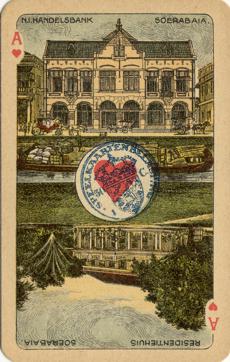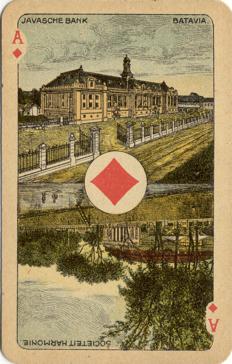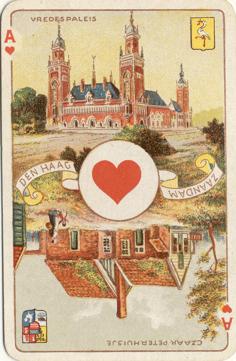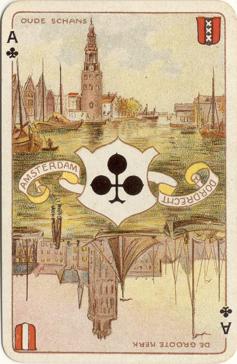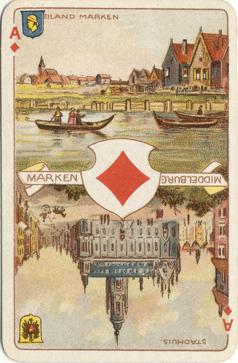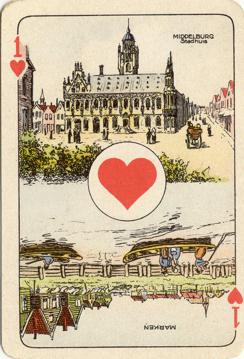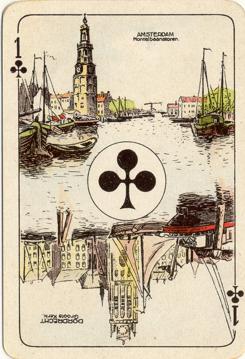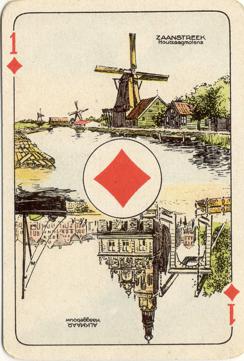 |
The "Rhenania"
deck was printed and published since 1911 by NSF and later SN. In 1913
it was still in the sales books, but it didn't stay in production for
long. On the aces are scenic views of places along
the river Rhine. Hence the name.
The
court cards from the "Rhenania" deck show a distinct
resemblance to the "Cartes Impériales", made by Belgian
manufacturers like Van Genechten and Brepols & Dierckx.
|
|
 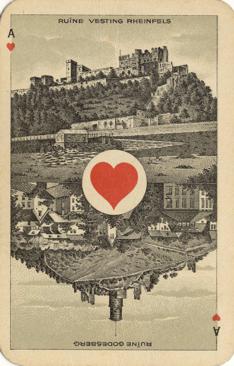 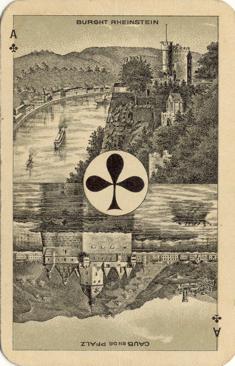 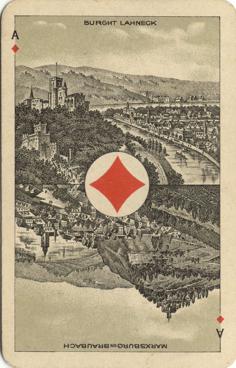
|
Maybe
because of all these delays and the extra costs, maybe because of competition
from other countries: a petition in bankruptcy was filed and adjudged in May
1912. One of the curators was the director of the "N.V. P.C.J. Faddegon
& Co.", a firm that exploits a lithographic and book printing office,
as well as a cardboard factory. This company was located on the Haarlemmer
Houttuinen, quite near to the factory on Prinseneiland. As Faddegon had great
experience in lithography and cardboard making, a take-over of the "NV
Nederlandsche Speelkaartenfabriek" was a logical step. The factories were
located close to each other, so an efficient company management was possible and
the production of playing cards formed a good extension to the line of the
Faddegon products.
In
August 1912 the clients were informed of the take-over and the new name of the
company: officially the "Speelkaartenfabriek Nederland van de NV Steen- en
Boekdrukkerij & Cartonnagefabriek v/h Faddegon & Co." In short:
"Speelkaartenfabriek Nederland" (in this article referred to as SN).
In
World War I the Netherlands had remained neutral. Business was good in those
years for the SN company: their competitors in Germany had to cut back on their
export and in Belgium production nearly came to a halt, thus it was easy to win
back the Dutch market. The company invested their profits in new storage and
production facilities. At the end of 1918 the company of Faddegon had 6 rapid
lithography presses, 10 hand presses and a big drying machine that could handle
6000 sheets of playing cards per day.
previous or
next







